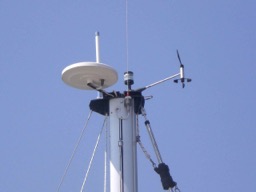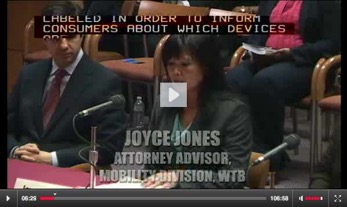FCC Meeting Today Only Deals with Spectrum
Today’s FCC Commission meeting was devoted entirely to 2 spectrum topics - an unusual event. As of this writing the text of one of the items has not been released, but press releases and commissioners’ statements are out for both. (Both texts have now been released)
The first item dealt with a Report & Order in Docket 10-4, which non techies refer to as the signal booster item although more strictly speaking it deals with bidirectional amplifiers (BDAs) for mobile radio systems. This has been a recurring topic here. 2487 days after May 1, 2006 when CTIA presented the Commission with a white paper declaring “FCC action is urgently needed”, FCC finally acted, sort of, in a decision that makes BDAs explicitly authorized under certain conditions.
The original 2006 CTIA white paper said,
“CTIA asks the FCC to issue a notice to consumers confirming and informing them that operating wireless repeaters without licensee authorization is unlawful and may result in service outages and other harms to the network. CTIA also asks the FCC to issue a notice to manufacturers, importers, distributors, and retailers clarifying that they are permitted to market and sell repeaters only for use under the clear authority and control of licensees.”
This was oddly reminiscent of the old AT&T’s preCarterphone view of CPE. FCC’s R&O took a more positive view of the public needs in rural America:
The decision strikes a balance between public needs and the rights of the carriers. I said “sort of” in the introduction, because FCC has agreed to revisit this issue in 2 years and statements at the meeting made it clear that if the carriers do not all cooperate with legitimate user requests the rules may be modified to make them more user friendly and less carrierWhile nearly the entire U.S. population is served by one or more wireless providers, coverage gaps that exist within and at the edge of service areas can lead to dropped calls, reduced data speeds, or complete loss of service. Robust signal boosters can bridge these gaps and extend coverage at the fringe of service areas. Signal boosters are particularly useful in rural and difficult-to-serve indoor environments, such as hospitals. Signal boosters can also improve public safety communications by enabling the public to connect to 911 in areas where wireless coverage is deficient or where an adequate communications signal is blocked or shielded. In short, because signal boosters represent a cost-effective means of improving our nation’s wireless infrastructure, the rules we adopt today should lead to more robust service for many Americans at home, at work, and on the road.

As reported previous, FCC’s delay on this issue, the 2487 days from the CTIA white paper to today’s R&O, was a lose/lose period for both sides.
The BDA manufactures faced serious offshore competition from irresponsible manufacturers who made no attempts to limit interference from their units to cellular systems as well as being denied access to normal capital from the financial community because of the risks involved when the megacorporations that are the 4 major carriers sought to have them driven from the face of the earth! The carriers also faced both continuing interference from early models of BDAs as well as current models from irresponsible manufacturers along with the knowledge that no matter what the new rules say the bad units will continue in use for several more years. THE COSTS OF FCC DELAY!!
CTIA has issued no statement as yet on the R&O while Wilson Electronics, a major manufacturer of this equipment has.
The second item dealt with an expanded “Wi-Fi” band at 5 GHZ. I put Wi-Fi in quotes since it is a registered trademark of the Wi-Fi Alliance which in the past has indicated misgivings about the FCC’s casual use of terms like “super Wi-Fi”. Also the present and probably the new FCC rules do not require the use of only IEEE 802.11 standards in any specific unlicensed bands.
The Commission press release states
The Commission proposed to make up to 195 megahertz of additional spectrum in the 5 GHz band (a 35% increase) available to unlicensed wireless devices. It also proposed to create a more flexible regulatory environment, and to streamline existing rules and equipment authorization procedures for devices throughout this band.
Unlicensed National Information Infrastructure (U-NII) devices today operate in 555 megahertz of spectrum in the 5 GHz band, and are used for short range, high speed wireless connections including Wi-Fi enabled local area networks and fixed outdoor broadband transceivers used by wireless Internet service providers to connect smart phones, tablets and laptops to the broadband network.
The proposed modifications would provide access to additional contiguous spectrum with consistent technical requirements, allowing unlicensed devices to use wider bandwidth channels, leading to faster speeds.
This spectrum current has federal users in parts of it and thus FCC and NTIA share responsibility for it. NTIA has agreed to the NPRM and may modify its position later. In or nearby the promised spectrum are present and planned uses by Intelligent Transportation Systems (ITS). Some members of the ITS community have been comparing this NPRM to the GPS/LightSquared issue although the major ITS trade association, ITS America was quite moderate and open minded in its statement.
The link to NPRM text is now here.




![Validate my RSS feed [Valid RSS]](valid-rss-rogers.png)

